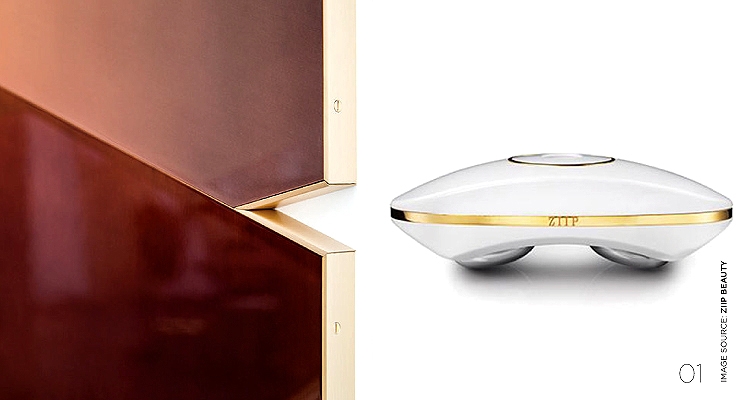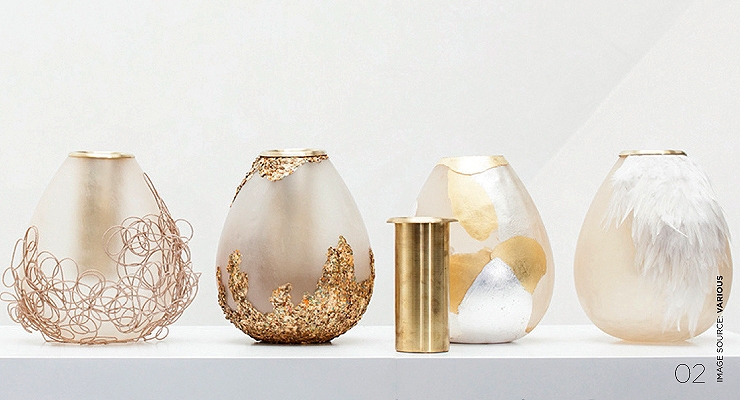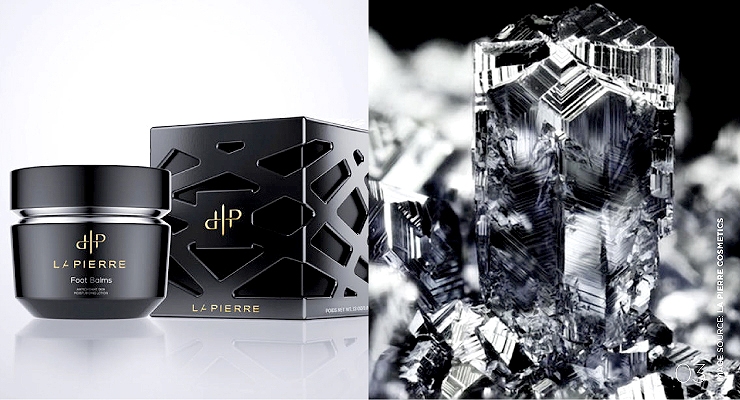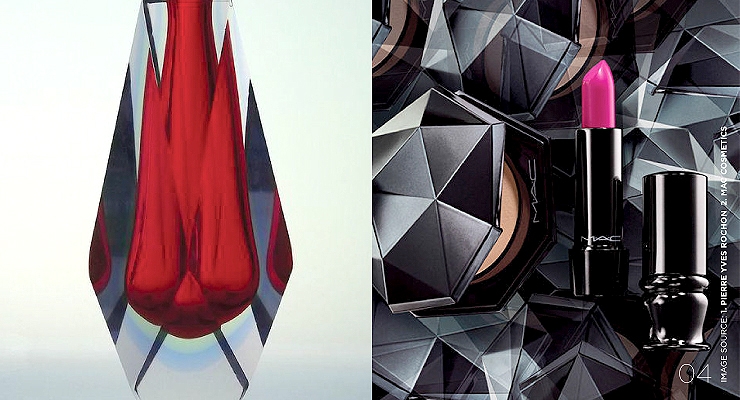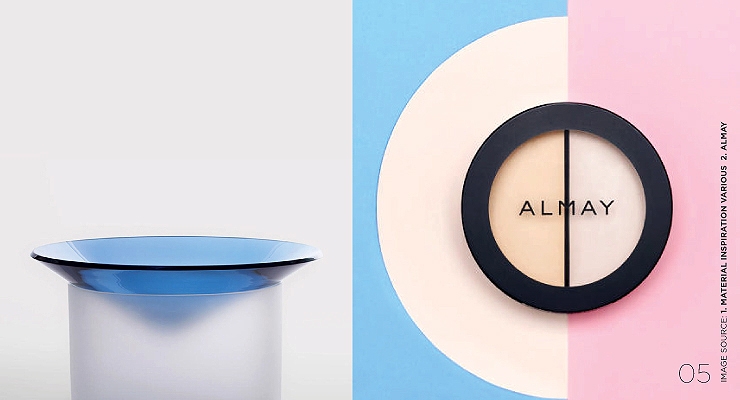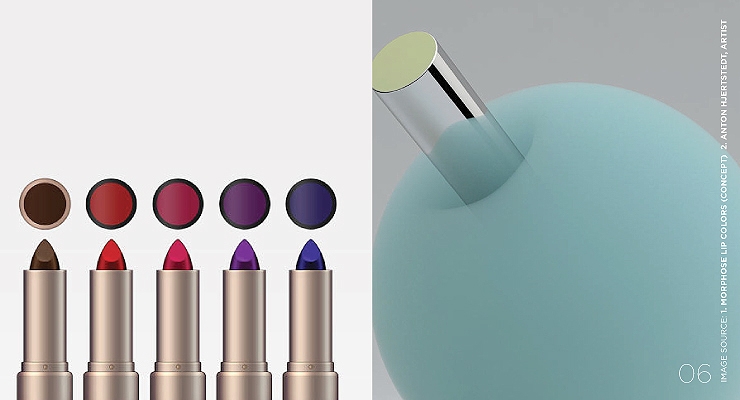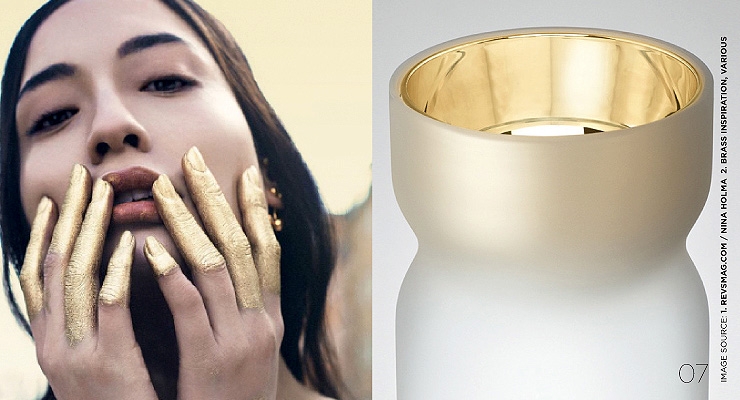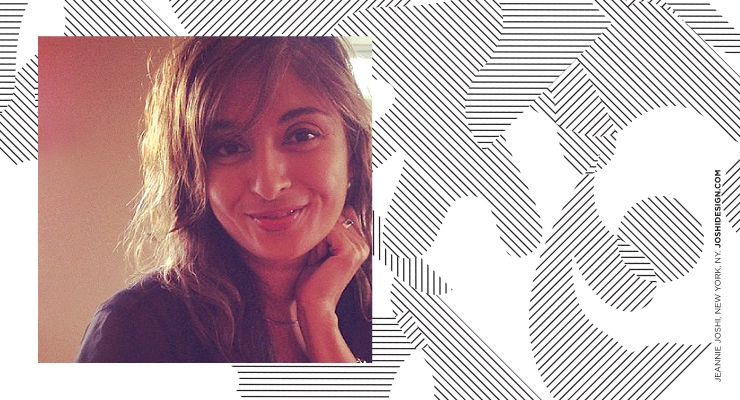Jeannie Joshi11.20.17
As fall sets in, luxury beauty focuses on taking a slow and steady approach to life that encompasses both inner and outer beauty, encouraging a holistic approach of mind, body and spirit.
Looking to the future over the next five years, a season of respite emerges for creators, consumers and companies—where Value is being redefined and the natural, rare and sublime is becoming the ultimate luxury. People are probing deeper into digital advances, sustainable self-care; they want conscious products, not labels—they’re searching for more unique experiences, products with purpose, and design that is not just good, but also for the greater good.
For premium beauty, this inspires a juxtaposition of stories; from the rich opulence grounded in a historical past, a story that is fierce yet feminine—to concepts of raw minimalism combining the natural and the poetic. Mixing high-octane glamour with the eccentric and artsy, such as the luxe French skincare line Gemology, which makes gem-based toners and serums and also offers a “diamond facial”.
At the same time, a counter trend pushes toward the real and rare, combining natural and the poetic with a raw edge, accents of rare luxurious pigment and iridescent finishes.
How Luxury Has Evolved
According to Euromonitor, experiences account for 55% luxury spend worldwide and rare experiences are becoming more prized. Consumer values are shifting from owning to experiencing.
Tim Murphy, chief product officer at MasterCard, notes that the changing consumer and motivational drivers over recent decades are:
- 1980s-90s: the item (product) - conspicuous consumption
- 1990s-2000s: the experience
- 2010 - present: the product and the narrative
Post-recession, luxury design is returning to a focus on the luxury item, with quality, value and resilience. The future of luxury in its various evolutionary forms is becoming experiential, diversified and most importantly, inclusive; expanding into lifestyle, travel and wellness.
With experiences, locations come into focus, for example, Ian Schrager’s “luxury for all” brand mantra for the newly opened, Public Hotels. And "Reflection Within” retreats at Aman Resorts, which present a mini-retreat with a Buddhist meditation specialist and local culture guide.
Luxury spending is growing, and a counter trend to over-affordability is equally being carved out by the “super-elite” who are seeking more exclusivity with experiential getaways and sensory entertainment—as these elite seek to separate themselves from the entry-level luxury “masstige” market, according to BCG. “Sublimotion” is a hi-tech luxury dining experience. For $2,000, guests enjoy an ever-changing animated interior mood that coordinates with the food for a multisensory gastronomic experience.
A rediscovery of opulence, mastery of a craft and exceptional expertise are also taking place, reenergizing excellence and attention to detail with everyday luxuries inspired by passion and curiosity for the intricate nature of objects, materials and complex techniques.
As the Victoria & Albert Museum explains at its What is Luxury exhibition in London: “Luxury production represents an investment in time. This applies not only to the time spent making an object, but also to the process of perfecting skills. Makers of luxury are inspired by passion and curiosity for the intricate nature of objects, the potential of materials, and complex techniques. This motivation often exists beyond market demands.”
Etched metal and glass, decorative and baroque lettering, polished brass, richly colored glass, gilded bubble wrap, and jewel tones for color inspiration all speak luxury. Heritage, fine materials and the utmost attention to detail become vital elements to draw the consumer into the brand.
Sophisticated sustainability, homeopathic luxury is up and coming, harnessing sustainable approaches to become more value-driven. “Five years ago, sustainability was seen as a supply-chain problem; now, it’s a design opportunity,” says Dilys Williams, founder of the Centre for Sustainable Fashion. Taxcidum Growable is a living necklace grown from known cancer-fighting mushrooms, which monitors wellbeing and releases “medication.” (Source: Growable Research)
Affluent consumers are demanding sustainability and social responsibility. Brands working in harmony with nature prioritize an environmental approach. Consumers are willing to pay more for socially responsible items. Sustainable solutions become a priority for eco-conscious brands and especially for environmental friendly packaging solutions.
Design purity emerges in pared-back branding, materials and finishes, recycled eco-friendly materials such as natural pulp boards, fiber mixes and reformed glass.
Differentiating Luxury
Designer Antony Gormely says, “I would say that luxury is a sense of total peace, silence, and a place that is removed from the incessant demands of the world.”
Designer and artist Marcin Rusak believes that time is the ultimate luxury. He created a toolkit called Time for Yourself, which: enables you to get lost in pursuit of finding time to yourself. To bring back the increasingly obsolete power of our body clocks, sense of direction, adventure and basic primal instinct. There is nothing better than what you find when you are lost. Rusak explains: “It is almost impossible to get truly lost these days. It would take a lot of effort to experience this luxury.” (Source: Marcin Rusak)
In 2007, Tom Ford said luxury needed to be sustainable. “This should be the ultimate status symbol,” he said, “to enjoy things that haven’t had a destructive impact on the planet or its people.” (Source: Conde Nast Luxury Conference)
In 2008, Antonio Belloni, LVMH’s Group Director, indicated that there is no longer such a thing as "the luxury customer.” He said the luxury goods industry now serves a "mosaic of micro-consumers," and emphasized LVMH’s market as a “mosaic of cultures and dreams.” (Source LVMH 2013, Annual Report)
Design Matters
How does your message reflect the luxury brand story? What makes you stand out?
There is not one definition, but many, and above all, it's value that counts. As Marc Jacobs said, “I think there is something about luxury—it’s not something people need, but it’s what they want. It really pulls at the heart.”
The Vision
10 opportunities for a brave new world of luxe niche beyond the here and now:
1. Imagination is priceless.
2. Heritage is pride.
3. Authenticity is power.
4. Sustainable is beautiful.
5. Time is natural.
6. Space is sublime.
7. Travel is meaningful.
8. Keepsake is eternal.
9. Craft is art.
10. And impermanence is the only constant.
Morten Grønbørg of Scenario Magazine, sums it up: “In a time when an increasing number of middle-class people can afford more and more, and where the majority of the democratic societies have equal access to everything, impermanence has become a luxury.”
What Is Your Luxury?

